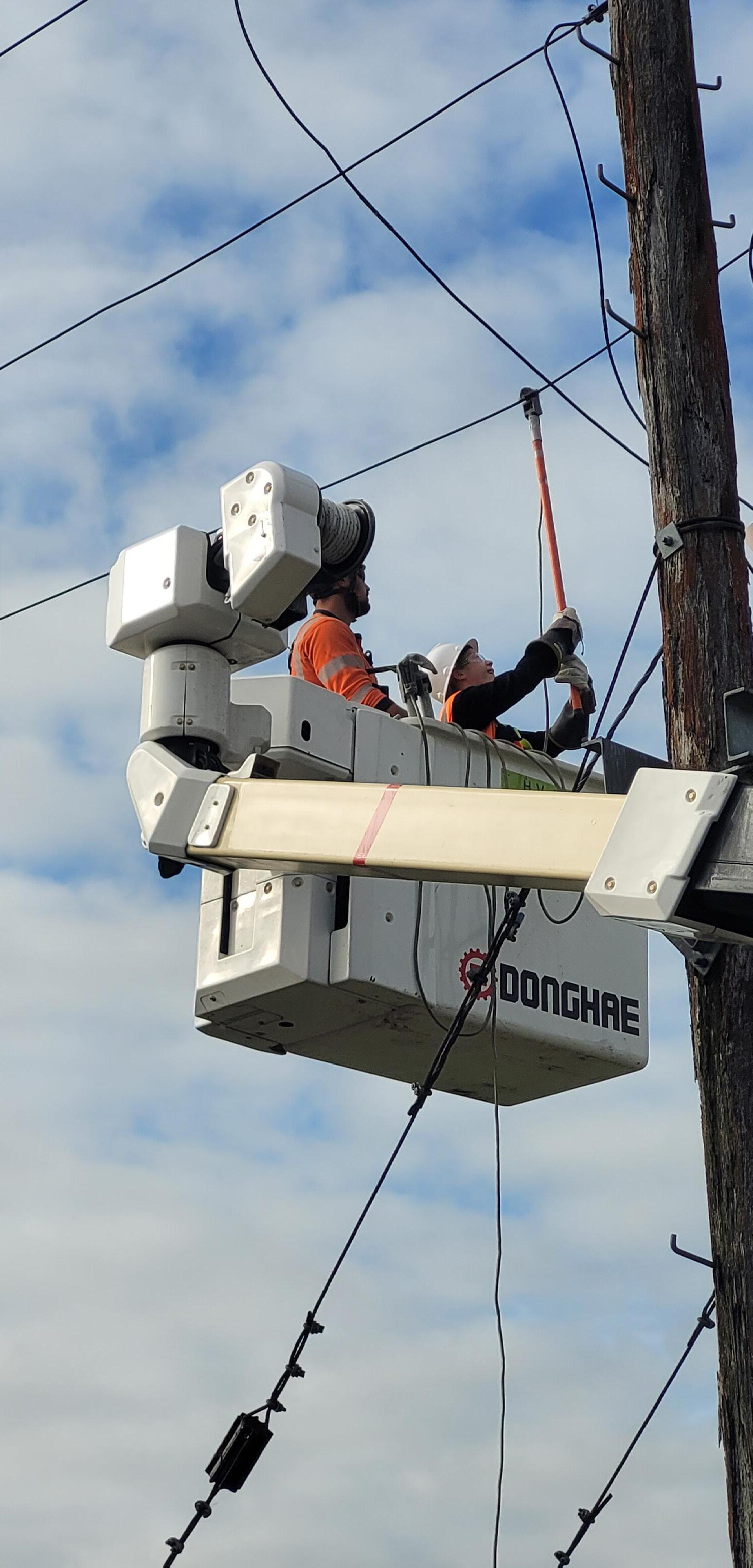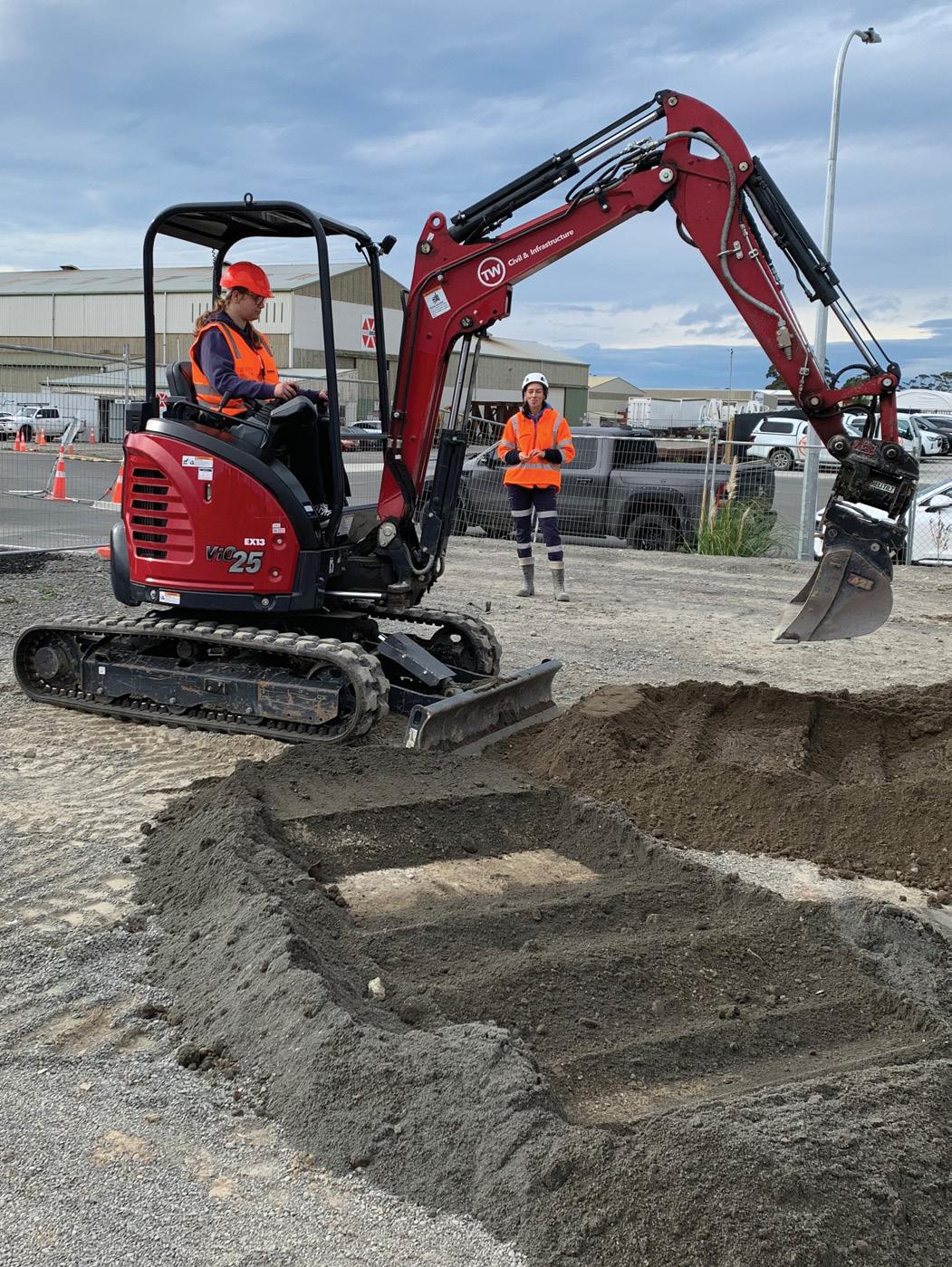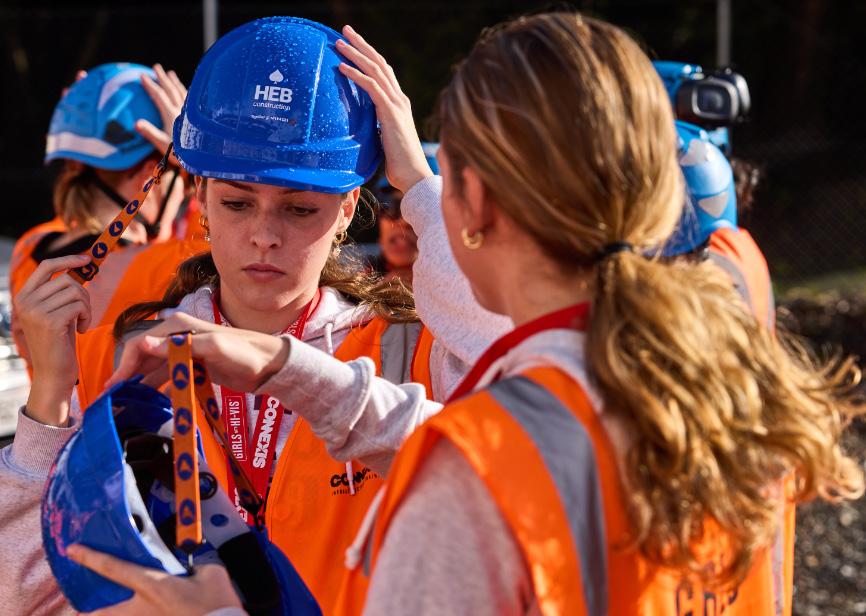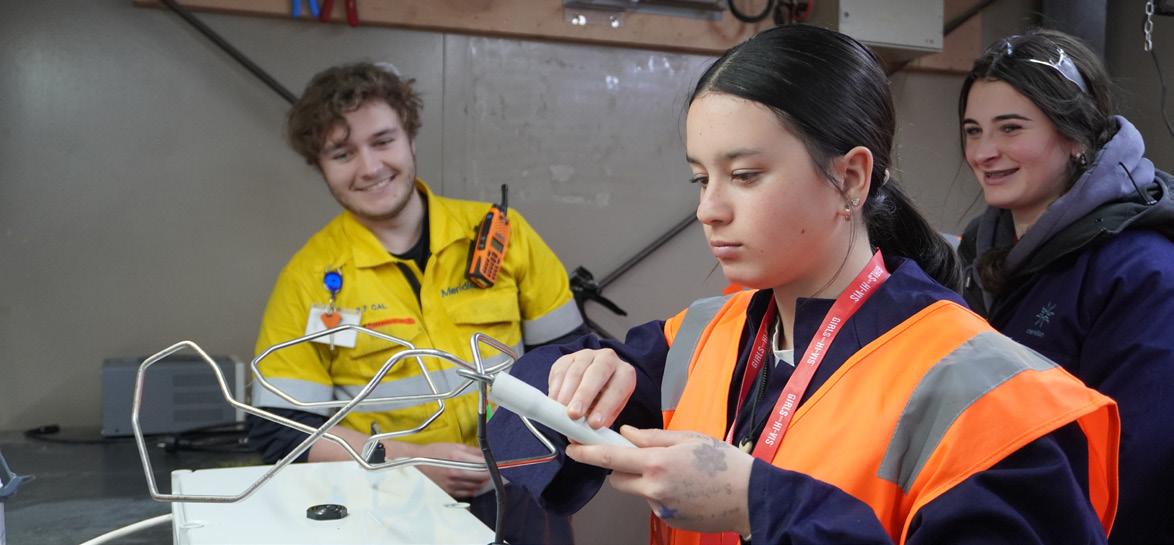
7 minute read
Tracking the shift: Girls with Hi-Vis opens doors to infrastructure careers
Now in its 10th year, Girls with Hi-Vis is a pioneering programme that connects ākonga with hands-on experiences in infrastructure and trades. Led by Connexis, the initiative is helping shift perceptions and open career pathways for young women across Aotearoa.
This year, more than 500 secondary school students from across the motu have attended Girls with Hi-Vis events.
Hosted by industry leaders like Fulton Hogan and Contact Energy, the events included workshops, site visits and presentations that helped ākonga wahine learn basic trades skills and explore what a career in infrastructure can offer.
Connexis, a leading infrastructure trades training provider, facilitates the events. The company launched the initiative in 2015 after employers asked for help attracting more women into male-dominated sectors.
“When we began Girls with Hi-Vis, it was because employers had recognised the potential of employing more females in trades but were struggling to attract them to apply for roles,” says Connexis executive director, Kaarin Gaukrodger.
Kaarin and her team knew there were ākonga wahine looking for career pathways beyond those traditionally offered in schools. The first event sparked a movement.
“Girls with Hi-Vis now directly connects students with local employers with active opportunities for employment and apprenticeships, which has without doubt helped the upswing in female representation, as shown in our training programme enrolments,” says Kaarin.

Learning on the job
In June, students from 79 schools donned high-vis gear to visit highway and public walkway construction sites, geothermal and hydro power stations, and more.
Ākonga met women working in a range of trades and learned about the qualifications and roles available in each sector. They also gained hands-on experience in traffic management, cable joining, working at height and operating heavy machinery.
“Students come to Girls with Hi-Vis from school, where most of their learning is classroom based,” says Kaarin.
“Being exposed to real working environments, often at some of the country’s major infrastructure assets like power stations and roading projects, opens them up to a whole new practical way of learning.
“A classroom environment doesn’t suit everyone,” she continues. “Being given the opportunity to learn on the job really fires up students’ enthusiasm for trades and workbased apprenticeship training.”
Line mechanic Natalie Hughes agrees. “Girls with Hi-Vis is important because it gives girls a chance to try things they wouldn’t usually expect to do,” she says.
Natalie attended a 2022 event while studying at Trident High School in Whakatāne. She found the practical lessons inspiring and credits the experience with sparking her interest in trades.
“I really enjoyed being a bucket operator and controlling a crane,” she says. “The best thing was the pole top rescue. I really enjoyed the hands-on nature of the work.”
That same year, Natalie entered a Gateway programme through a Connexis initiative that allows ākonga to work on trades qualifications while still at school.
She began training as a line mechanic with Horizon Networks and joined the company full-time after finishing school. She’s now set to complete her apprenticeship and regularly attends Girls with Hi-Vis events to encourage other ākonga to take up the opportunities on offer.

Ten years of impact
To Kaarin, stories like Natalie’s are proof of the programme’s success.
“The most obvious marker of success is that we now have women who’ve previously attended Girls with Hi-Vis events coordinating and participating in them for their employers as professional tradies,” she says.
She hopes to see more wahine ākonga enter infrastructure trades – and more ākonga in general for whom this may be seen as a ‘Plan B’ option.
“Too often, trade careers are still regarded as a ‘last resort’ for school students who might be struggling academically,” she notes.
“By connecting students directly with local employers, through events like Girls with Hi-Vis and Gateway, Connexis can show them that there are great opportunities to be found.”
Girls with Hi-Vis began in 2015 with just three electricity companies and 50 students. In 2025, 18 companies from a range of sectors participated, and the number of students involved has grown fifteen-fold.
Most of the 2025 employers are repeat participants, many of whom have taken part almost every year. Kaarin says this is a clear indication of the ongoing value they see in the event.
She adds that employers in civil, energy and water industries have recognised the potential of connecting directly with high school students as they make career decisions.
“[They’ve] recognised the platform it gives them to demonstrate career opportunities that allow young women who may not enjoy or thrive in classroom-based study, or may not want office-based careers, to work in practical, skills-based trade careers.”
Industry data supports the programme’s impact. In the past five years, female trainees enrolled in civil, energy and water qualifications rose from eight to 14 percent. While Kaarin acknowledges this increase can’t be solely attributed to Girls with Hi-Vis, it reflects a more proactive approach to recruiting female apprentices.
Connexis also collects feedback from students and school staff after every event. This year, 87 percent of respondents said they had little or no knowledge of infrastructure before attending, and 41 percent had not considered a career in the sector.
However, 51 percent of students surveyed said they could now see themselves pursuing a career in infrastructure and trades.
“Each year these survey results also form part of the planning process for future events. This feedback is always passed on to the employers to help them tailor their events to engage and interest the students,” says Kaarin.

Turning interest into action
Based on partner suggestions, this year’s events were capped to involve fewer students, helping each participant receive a more involved experience.
“We also ensure that every employer hosting Girls with Hi-Vis events has actual opportunities available,” says Kaarin.
“This helps build tangible results and sends the message that Girls with Hi-Vis isn’t just about presenting general career possibilities – students see there are actual job leads or training opportunities.
“Attracting more females into infrastructure trades is always going to be a long game,” she adds. “But it starts at the grassroots level by changing the conversations we have with young women about what they envisage for themselves and what’s available to them.”
Educators share Kaarin’s enthusiasm. Karen Caso, careers and Gateway coordinator at Mt Albert Grammar, attended a recent event in Auckland and was impressed by the opportunities on offer.
“It was great for the students to have hands-on experience of a variety of activities that gave them an idea of what these jobs involve,” says Karen.
“They were able to interact with staff and give different things a go. It was a really informative day for them.”
Natalie encourages ākonga to take part. “If you’re thinking about a trade, just go for it,” she says. “Don’t let the opportunity pass you by.”











